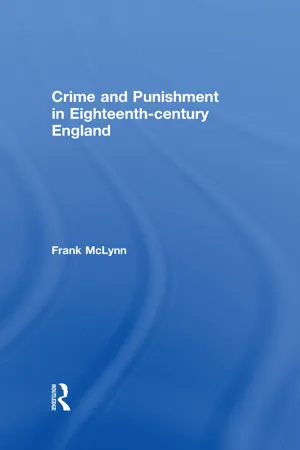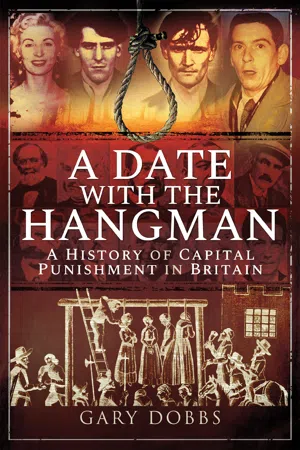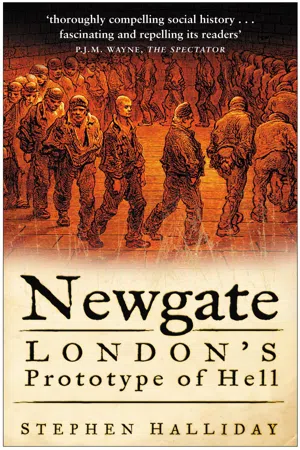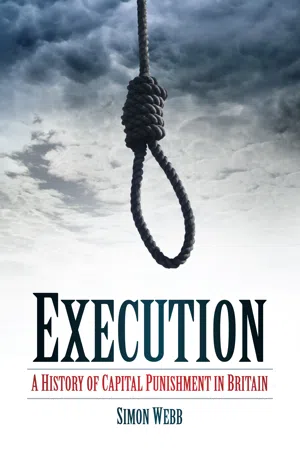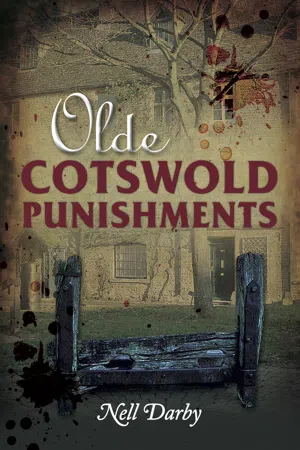Bloody Code
The "Bloody Code" refers to the harsh and punitive criminal laws in England during the 18th and early 19th centuries. It included a wide range of offenses that were punishable by death or transportation, and the penalties were often disproportionately severe. The term reflects the brutal and unforgiving nature of the legal system during this period.
6 Key excerpts on "Bloody Code"
- Frank McLynn(Author)
- 2013(Publication Date)
- Routledge(Publisher)
...Introduction The Bloody Code is the name traditionally given to the English system of criminal law during the period 1688–1815. In these years a huge number of felonies punishable by death was added to the statute book. In 1688 no more than fifty offences carried the death penalty: the crimes so punishable were treason, murder, rape, and arson. By 1765 this figure had risen to about 160; an average of one new capital offence a year was added during the thirty-three-year reign of George II. A further sixty-five capital felonies added to the Code from 1765 to 1815 brought the number of crimes that bore the death penalty to about 225 by the end of the Napoleonic wars. 1 Even so, the number of capital offences was not co-extensive with the number of cases where the death penalty could be inflicted. On one calculation, the actual scope of the death penalty was about three or four times as wide as the capital provisions indicate. 2 The other notably sanguinary feature (at least on paper) of the Bloody Code was that the new capital statutes deprived the felon of ‘benefit of clergy’. Before 1706 it had been possible for members of the clergy and other literate persons to escape the death penalty in the case of lesser crimes by pleading an old form of ecclesiastical privilege; to obtain ‘benefit of clergy’ a person had to offer proof of literacy by reciting a passage of Scripture. An Act of 1706 abolished the literacy test. 3 Its abolition undoubtedly saved many illiterate men and women from the gallows since they were taken under the umbrella of equity. But what the elite gave with one hand it took back with the other. As well as enlarging the scope of the death penalty, the authorities saw to it that the new capital offences were ‘non-clergyable’, that is, benefit of clergy could not be invoked. The explosion of capital statutes marked a return to Tudor severity and was the product of a mentality that saw the gallows as the only deterrent to serious crimes...
- eBook - ePub
A Date with the Hangman
A History of Capital Punishment in Britain
- Gary Dobbs(Author)
- 2020(Publication Date)
- Pen & Sword History(Publisher)
...Chapter Three The Bloody Code: The Rise of British Hanging T he eighteenth century saw a sea change in the British way of life, as industrialisation started to replace farming. Large numbers of people moved from the countryside, as those who had formerly worked in agriculture sought employment in cities. Some found it difficult to adjust to the new urban society that was being created at breath-taking speed around them. Many were poor, often destitute, and inevitably many would turn to crime to survive. Records from the period show a rise in the number of pickpockets operating in London, as well as housebreakings and armed hold-ups on the streets. It was the same story across the country and the response of the authorities was to instil fear into the hearts of lawbreakers. During the early part of the century there were more than 100 capital offences, many of them unbelievably trivial, and by 1815 this had risen to over 200. This huge expansion of the death penalty came to be known as the Bloody Code, and for the best part of a century it was believed to be the best method of maintaining law and order. What sort of offences merited hanging under the Bloody Code? Damaging Westminster Bridge was one, engaging in acts of male homosexuality was another, as was stealing from a rabbit warren and impersonating a Chelsea Pensioner. All of these offences could theoretically be met with the death penalty. While it was thought that ferocious laws would reduce crime, this was not what happened at all. There were many reasons for this. Firstly, during the eighteenth and early nineteenth century when the Bloody Code held sway, it was unlikely that one would be caught for any sort of crime. There were no police forces to speak of and no detectives at all. If you were not caught red-handed committing a crime then it was extremely unlikely that you would ever be caught at all. Also with regular public hangings, the public had become hardened to the sight of death...
- eBook - ePub
Newgate
London's Prototype of Hell
- Stephen Halliday(Author)
- 2007(Publication Date)
- The History Press(Publisher)
...In 1688 there were about fifty capital crimes, most of which had been added by Acts of Parliament to the Common Law offences of treason, murder, arson, robbery and grand larceny, but from that date there followed a series of statutes creating new capital offences. During the reigns of the first four Georges, 1714–1830, such statutes created a steady flow of such penalties, so by the latter date the number was approaching 300. Under this code an offender could be hanged for stealing goods worth 5 s (25p), impersonating a Chelsea Pensioner, cutting down a tree or damaging Westminster Bridge. A statute of 1721 designed to discourage resentful weavers from damaging clothes made from imported cloth was to have strange consequences in the trial of the Newgate Monster later in the century. 3 The most notorious of the statutes that created the Bloody Code was the Waltham Black Act of 1723, which was brought in to deal with roving bands who, with blackened faces, were stealing deer in royal forests. This act alone created fifty capital offences, including the poaching of deer. Some commentators have attributed this savage code to the fact that the interests of property were very well represented in both the Houses of Parliament which passed the statutes, an interest underpinned by the influential philosophy of John Locke (1632–1704) whose writings emphasised the role of just government in preserving property rights. In his Second Treatise of Government, published in 1690 as the Bloody Code began its monstrous progress, Locke defined political power as the right to make ‘Laws with Penalties of Death, and consequently all less Penalties, for the Regulating and Preserving of Property’. The 1830s were the high-water mark of the Bloody Code...
- eBook - ePub
Execution
A History of Capital Punishment in Britain
- Simon Webb(Author)
- 2011(Publication Date)
- The History Press(Publisher)
...By 1815, a person in Britain could be hanged for any of 220 offences, many of them unbelievably trivial by today’s standards. This huge expansion of capital crimes became known as the Bloody Code, and for over a century it was believed to be the best means of keeping crime under control in this country. What sort of offences merited hanging during the rule of the Bloody Code? Damaging Westminster Bridge was one. Incredible as it may seem, vandalism to this bridge could theoretically result in being hanged. A particularly savage law introduced at this time, and one which is frequently cited as the epitome of the Bloody Code, was the Black Act of 1722; it is often known as the ‘Waltham’ Black Act, in reference to the forest of Waltham in Hampshire. Its official title, nowhere near as catchy as ‘The Black Act’, was: An Act for the more effectual punishing of wicked and evil disposed Persons going armed in Disguise, and doing Injuries and Violences to the Persons and Properties of His Majesty’s Subjects, and for the more speedy bringing the Offenders to Justice. Landowners in the south of England had been troubled by an increase in poaching and vandalism on their estates. The Black Act aimed to put a stop to this, by hanging anybody who looked as though he might even be preparing to poach deer. After the passage of this notorious Act, it was a hanging matter to chase deer in a forest or estate. It was also a capital crime to black one’s face or to wear a disguise in a forest. Other hanging offences, which already existed, were as varied as associating with Gypsies, sending threatening letters, felling someone else’s trees, stealing a horse, engaging in acts of male homosexuality, stealing from a rabbit warren, shoplifting and impersonating a Chelsea Pensioner. Even at the time, many people in Britain were disturbed at the introduction of such a far-reaching piece of legislation, which created so many capital crimes...
- eBook - ePub
- Nell Darby(Author)
- 2011(Publication Date)
- The History Press(Publisher)
...INTRODUCTION Crime and punishment have both fascinated and repelled us for centuries, but in an age and society where the usual punishment for crimes consists of community service, Anti-Social Behaviour Orders (ASBO), or prison sentences regarded by the right-wing media as little different to short stays in hotels, the punishments of the past seem both different and more imaginative. Until the middle of the eighteenth century, many common law crimes were punishable by hanging, and although statutes were brought in from then on that limited the use of the death penalty, there were still, to our eyes, a multitude of crimes that could be punished by death. In fact, the Bloody Code of the eighteenth century enabled courts to sentence to death those guilty of minor property crimes, such as thefts, that to us seem very petty. Hanging was usual, but burning at the stake, being hanged in chains, or being drawn and quartered were also accepted forms of punishment practiced well into the eighteenth century. Suicides fared little better; if someone was deemed to have been sane when they killed themselves, regardless of the reasons for their decision, they would be buried in unconsecrated ground. One Gloucestershire man, Samuel Cooper, who had hanged himself from a bacon rack at his house in the Forest of Dean in 1752, was buried at a crossroads outside his town, with a stake driven through his body. 1 And those punishments that allowed criminals to stay alive seem little better than the death penalty...
- eBook - ePub
- Clive Emsley(Author)
- 2018(Publication Date)
- Routledge(Publisher)
...In reality the new capital legislation of the eighteenth century generally defined offences in a very narrow way and often made reference to a specific institution or piece of property only; as a consequence the number of prosecutions likely to follow the passing of a capital statute was tiny. Destroying Westminster Bridge was the same kind of offence as destroying Fulham Bridge, but each offence had its own capital statute. Peel made much of such legislation when, in 1826, he proposed his rationalisation of the law relating to felony. There were, he explained, twenty statutes concerning the protection of trees from theft and wilful damage; the legislation for the prevention of stealing or destroying madder roots and for the preservation of hollies, thorns and quicksets in forests was tacked on, respectively, to acts relating first, primarily to sugar brought from the Americas and second, to customs duties. ‘If an offence were committed in some corner of the land,’ protested Peel: a law sprang up to prevent the repetition, not of the species of crime to which it belonged, but of the single and specific act of which there had been reason to complain. 6 Matters had rarely been that simple, nevertheless Peel was right in drawing attention to the fact that eighteenth-century parliaments did not legislate for species of crime. While there were efforts to consolidate the vagrancy laws and the game laws, eighteenth-century legislators had never attempted to codify capital legislation; they did not think in terms of general codification or going back to first principles. More important, perhaps, in any assessment of the Bloody Code is to recognise that the majority of those executed during the eighteenth century were prosecuted under legislation which went back to the Tudors and Stuarts...
